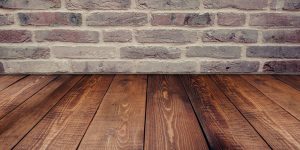
If you want to sand down your own hardwood floors, it’s time to roll up those sleeves and put in some work to get them where you want them to be. This is an easy process once you have it down, but there are some mistakes that you absolutely want to avoid.
For beginners, we recommend the orbital sander. If you are super confident and experienced, try the drum sander, but proceed with caution. Read on for why!
The Prep Work Is the Same
No matter what sander you will use, it’s essential to first prep your floors and rooms for sanding. Obviously, you want to completely clear and clean your room of everything. While furniture and carpeting make sense initially, you also want to get rid of everything on your walls too. These items can get in the way and fall, damaging the floors and ruining all your hard work.
Then, you want to sweep, dust, and mop your floors. Anything that is resting on your floor, even the finest debris, can result in more scratches, making you have to do more sanding, especially in unfinished flooring.
How to Sand Hardwood Floors with An Orbital Sander
As mentioned, it is much easier to use a sander for sanding your hardwood floors. This takes a lot of the muscle work out of the process and usually yields better results. When sanding your floors, you will use a few different grits of sandpaper. You will use a coarser grit and then work to a finer grit by the end of the process. Be sure to research the different grits of sandpaper that are available. Remember that you want to be honest about the amount of work that you need to do for your sanding. You don’t want to do too little and then end up with a floor that doesn’t look fresh and fabulous by the time you are done.
Start by sanding with a 36grit to test the area. Test a small area that looks like it could use some work. Sand it for a bit and then step back to see what the floor looks like. If it is clean and bare, then you have determined that your grit should start at 36grit, then you’ll have the chance to move to 60 and 80.
If you think you need more, you may have to test another area to see if you need a 36grit that is crosscut. Sometimes, floors will need a 24 grit.
Grit Size Progression
You want to use the lower grits first and then move your way to a higher grit. Be careful because you don’t want to go too far, or the wood can start to shred and splinter. Don’t use a drastic angle for sanding your hardwood floors with an orbital sander, even hardwood floors like maple. Use the sander at somewhat of an angle, however, and you want to keep that angle consistent throughout the entire process. It may be hard to do this, but it is worth it in the end.
Another thing to keep in mind is that at whatever grit you start at, you need to work up in order. Do not skip any number, or your floor won’t look right in the end. Make sure to get all the way to the edge with your sanding. You may have a specific edging attachment, or you’ll need an edger. Just use the same grit of sandpaper.
Between each pass with the new grit, vacuum and dust your floors to keep them free of debris.
How to Sand Hardwood Floors with A Drum Sander
The other way to sand your floors is with a drum sander. This is a bigger sander that may seem easier because of the size, but it isn’t nearly as forgiving as an orbital sander. Most people who use a drum sander will only use one layer of sandpaper that they will have installed by the rental company.
However, always go through the same process of using different grits and working your way into higher grits. Work systematically across your floors in the same direction. Make sure that the grain of the wood is going in the opposite direction of your sander.
From There, The Steps Are the Same
From that point, follow the same set of steps to sand your hardwood floors. You want to sweep and vacuum the space in order to eliminate all of the dust and debris. Try not to use anything that will further scrape your floors or cause indentations.
After that, you want to use a dry microfiber cloth to remove all the remaining dust. Then, it’s time to go in with a wet mop to really shine and clear things. After that, you’re ready to jump right into the rest of your project, whether that is refinishing or doing something else.
In Conclusion: Sanding Your Floors Is Work
Sanding your hardwood flooring will take some elbow grease, and it won’t be easy no matter which way you do it. But it is rewarding work! Sanding with an orbital sander is absolutely going to be a more manageable approach than sanding with a drum. It takes a lot of the grunt work out, but you still need to be careful and work your way through the different grits as mentioned above.
At the end of the day, your floors are going to look good as new no matter which approach to sanding you take. The more care you put into the process, the happier you will be with the final results. So, sand away, and give your floors the facelift they deserve!
Sources:
How to Choose the Right Sandpaper Grit and Type | Bob Villa


